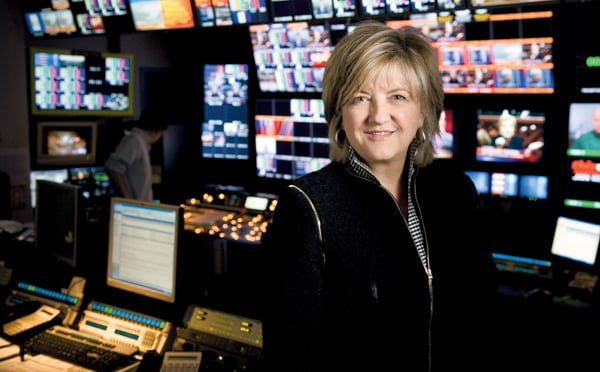In her three decades in television, Kathy O’Hearn has worked with some of TV’s big names, from Tina Brown at CNBC and Lou Dobbs at CNN to George Stephanopoulos as executive producer of ABC’s This Week.
Since she took over in 2005, the Sunday-morning show has been on a roll; it was the only Sunday show to gain viewers in 2007. This spring, the show will move to a new studio overlooking the Capitol at the newly opened Newseum on Pennsylvania Avenue.
Growing up in New Hampshire, you’re engaged in the political horserace as it parades through town. I went to an all-girls Catholic school, which was very strict, but we would skip school when someone big came to town to campaign. I remember skipping school to see Paul Newman at the mall. Then Sister Eleanor saw us on TV, and we got in trouble. We had navy-blue uniforms with white piping, so we were pretty noticeable.
I went into the University of Maryland as an education major very fired up about alternative teaching. Then I became an art major, then took a lot of photography, then I discovered this new major called “radio and TV”—and I was drawn to it like a moth to a flame.
I started out as a technician in the studio at NBC, then I worked the audio board at CBS, then did lighting, and finally got my own camera. I always was just trying to learn more and get the next opportunity.
Television is telling stories through pictures, so it was a great foundation.
I feel very passionate about the pacing and production of the show. We don’t let one second of tape go by without gathering in the edit room and looking at it. Good television is all about the details.
If we use one sound bite, we probably look at six different versions. What if we cut it this way? What if we made it shorter? Longer?
You’ll notice in all of George’s taped “On the Trail” interviews, we almost never go to a wide shot. It’s much more intimate to stay in tight. Every time you go to a wide shot, it’s like you’re being taken outside the conversation, so we stay in.
The essential element in television is the anchor. It’s the personalities that define the shows. This is George’s show, and I make it into television.
Technology has made television so much more fun because you can tinker more. With linear editing, if you wanted to change something, you had to go back and start all over. With nonlinear digital editing, you can go back and take this out, take that out, cut it this way. The mechanics have dramatically changed the level of perfection you can strive for.
When you do a really good show, it takes on a life of its own.
I think This Week is the most modern of the Sunday shows. It’s got a faster pace, which reflects the culture. Washington and the media today are more of a free-for-all.
When I started shooting for CBS, there were three networks. CNN had just started, but we thought it didn’t matter. It was much more of a clubby atmosphere. There was a closer connection between us and the people we covered.
It was all very male. I was the second network camerawoman in the country in 1979. I remember being on the press plane on presidential trips. Being a young single girl was just fabulous. It was all men! There’s a lot more women in television today.
I love being back in DC after 20 years in Los Angeles and New York. I’m out too much, but Washington and Georgetown are fun like that.


















